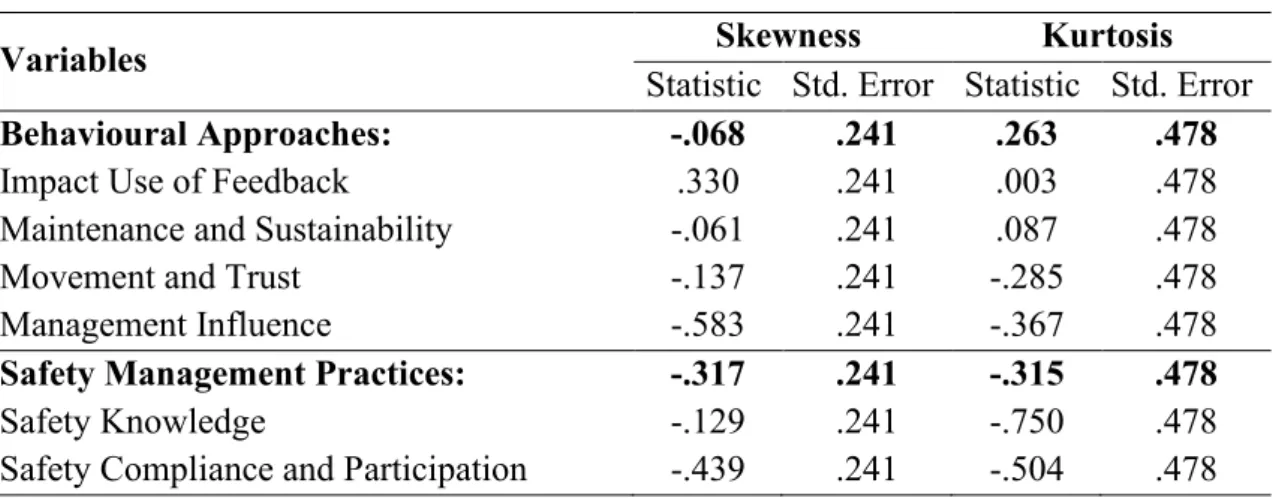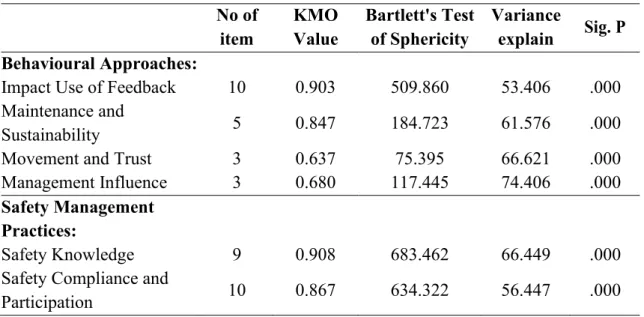Findings from the questionnaire indicate a positive commitment to behavioral safety and safety management practices within the research organization. The findings of the study are discussed in relation to existing theoretical frameworks of behavioral approaches and safety management practices for work improvement in organizations.

Introduction
Background of the Study
Workers on offshore oil and gas platforms are constantly faced with workplace safety, hazardous duties to perform, production expectations and constant technological development (Harun et al., 2014). The Department of Occupational Safety & Health (DOSH) in Malaysia and PETRONAS collaborated strategically to create the Offshore Self-Regulation Management System (OSRMS), which was designed to demonstrate compliance with this order (Ghani et al., 2017).
Problem Statement
Accident Trends and Causes
Implementation of the actions and awareness established in Malaysia to protect the workers has encouraged safety personnel to develop methods or approaches to reduce the number of workplace accidents, such as behavioral safety and safety management practices (Ismail et al., 2012). Previous study by Ismail et al., (2012) claimed that the behavioral safety approach has been studied theoretically and practically with positive results.
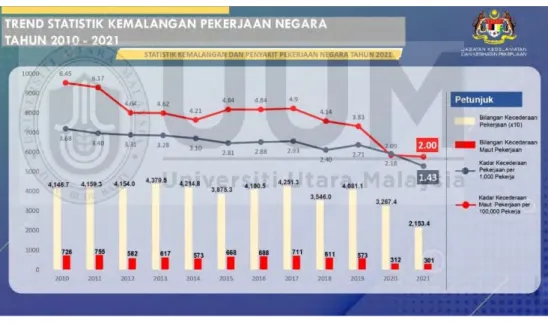
Research Questions
At the same time, another study conducted by Cooper (2009) explained that safety management interventions and behavioral safety procedures require a coordinated effort from all stakeholders to achieve the intended result. Based on previous researchers' studies and findings above, this study seeks to understand the evaluation of a behavioral approaches to safety management practices within the oil and gas workers who worked in FSO services in Peninsular Malaysia.
Significance of the Study
Scope of the Study
- Accident
- At-Risk Behaviour
- Behaviour
- Behavioural Approaches
Risk behavior is any behavior that increases the likelihood of an incident (Tauseef et al., 2012). The policies, strategies, practices and actions established or followed by the management of an organization with a focus on employee safety are known as safety management practices.
Organization of the Thesis
They are critical components that enable successful management of safety in companies and are made to comply with current laws relevant to the organization (Vinodkumar and Bhasi, 2010).
Introduction
Behavioural Approaches
Maintenance and Sustainability
According to Natalie et al. 2015), to understand how top management and supervisors' commitment to safety influences employees' behavior, it may be useful to include the influence of co-workers' commitment to safety. The correlation between the views of top management commitments to safety and safety behavior was mediated by the perceptions of supervisors' commitment to safety, as Zohar and Luria (2005) proved in their study.
Movement and Trust
Other quantitative studies conducted by researchers found that the frequency with which supervisors interact with their staff demonstrates the importance of employees caring about each other's safety, exhibiting good safety behaviors, and supporting each other in the event of an occupational injury. It should be given to those working at a stage in the process where their actions can have a significant impact on the outcome.
Management Influence
Safety Management Practices
Safety Knowledge
Employees may have different perspectives of different components of workplace safety leading to safety behavior (Subramaniam, 2014 as cited in Hayes et al., 1998). Not only that, Unnikrishnan et al., (2014) considered communication as one of the good safety practices at work.
Studies on Behavioural Approaches and Safety Management Practices Previous studies have shown that there is significant relationship between behavioural
Vinodkumar and Bhasi (2010) proved that safety management practices not only improve working conditions but also have a favorable impact on staff members' attitudes and safety-related actions, which reduces workplace accidents. The safety performance components of compliance and participation have direct and indirect relationships with safety management techniques.
Conclusion
Introduction
Research Design
There are four (4) dimensions in behavioral approaches, namely influence and use of feedback, maintenance and sustainability, movement and trust, and management influence. H1: There is a significant relationship between behavioral approaches to safety management practices among oil and gas workers. Sustainability, movement and trust and management influence on safety knowledge among oil and gas workers.
Sustainability, Movement & Confidence and Management Influence on Safety Compliance & Participation among Oil & Gas Workers.
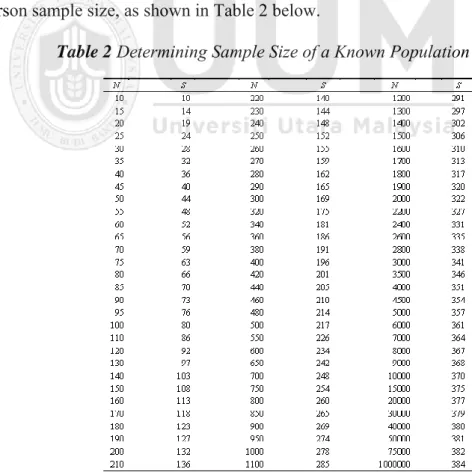
Questionnaire Design
Behavioural Approaches and Safety Management Practices
The behavioral approaches questionnaire was adapted from a study by Cox et al., (2004) which covers 4 dimensions. MGT10 Behavioral approaches are useful because they enable employees to share their knowledge and experience.
Pilot Study and Reliability Measurement
Tavakol & Dennick (2011) claim that the Cronbach Alpha principle is essential for the analysis of tests and questionnaires. The researcher must estimate this amount to bring validity and accuracy to the interpretation of the data. The Statistical Package for Social Science (SPSS) version 28.0 was used to analyze the data collected.
Descriptive statistics were used to analyze data for demographics and variables such as mean, mode, median, percentage, and graphical illustration.
Summary
Introduction
Response Rate
Respondents' Demographic Profile
In terms of age, 47% of respondents were between 31 – 40 years old, the highest group contributing to this research. The majority of the respondents in study were categorized as non-executive with a total of 40%. 15% of the respondents came from Manager/ Senior Manager/ Head of Department and finally other positions with a total of 7% such as Captains of the FSO vessel.
As a result, the Cronbach's alpha table above demonstrates the high reliability and appropriateness of the equipment used.
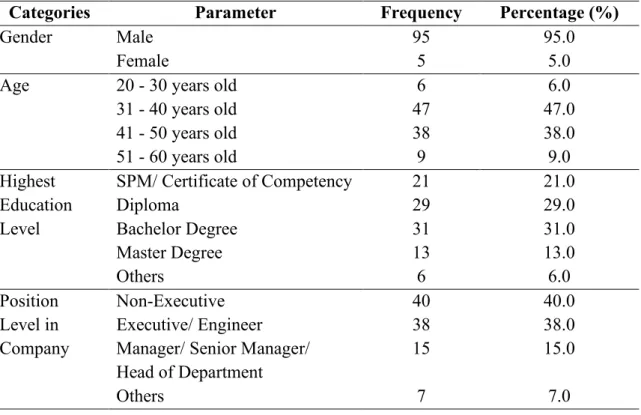
Factor Analysis Result
Based on the statistical analysis presented in Table 9, it can be seen that the study variables have a mean test score within two standard deviations and are uniformly distributed.
Behavioural Approaches
Maintenance and Sustainability
The frequency, percentage, mean and standard deviation data for each of maintenance and sustainability were shown in Table 13. According to the findings of the study, the mean range of the items was 3.84 to 4.30, with three items receiving high ratings and the other two received fairly high marks.
Movement and Trust
Safety Management Practices
Safety Knowledge
Safety Compliance and Participation
Correlation of Analysis
- Correlation Between Behavioural Approaches and Safety Management Practices
- Correlation Between Dimensions of Behavioural Approaches and Dimensions of Safety Management Practices
- Relationship Between Behavioural Approaches to Safety Management Practices
- Relationship Between Impact & Use of Feedback, Maintenance &
- Relationship Between Impact & Use of Feedback, Maintenance &
H1: There is a relationship between behavioral approaches to safety management practices among oil and gas workers. Impact of sustainability, movement and confidence and safety knowledge among workers in the oil and gas industry. The third category was Servicing of equipment in operation with 13.04%, Unhygienic and unsafe use of equipment/tools shared the same share with 8.70% and lastly No/.
Also, inadequate/no procedure, inadequate ventilation and unsafe design shared the same amount with 0.44% reported.

Conclusion
The third category reported was improper placement or storage with 10.96%, the Other category reported with 8.77%, the overload/obstruction category reported with 4.39%, inadequate maintenance/inspection with 3.07% and lack of emergency preparedness with 1, 32%.
Introduction
Recapitulation of the Result
Findings from the questionnaire indicate a positive commitment to behavioral approaches and safety management practices within the research organization. In addition, the organization's safety record has helped determine effectiveness, with zero recorded incidents for Q1 and Q2 in the year 2022. According to the statistical analysis, the organization has attempted to prevent workplace accidents through hazard reporting tools, and safety intervention programs called the Behavioral Based Safety (BBS) Appreciation Card.
This program is aimed at eliminating or reducing unsafe practices, unsafe conditions and near misses in the workplace.
Discussion
Discussion of Hypothesis 1
Accordingly, feedback innovation helped employees freely share security issues among operational teams and helped resolve the issue quickly. Effective maintenance and sustainability helped build trust among employees and improve employee behavioral approaches. Effective communication helped build strong relationships between workers, which helped improve employee attitudes.
Thus, it can be concluded that there is a positive commitment to behavioral approaches and safety management practices among the study organization's oil and gas workers.
Discussion of Hypothesis 2
These findings showed that 2 of the 4 dimensions, Impact & Use of Feedback and Management Influence, contributed to Safety Knowledge. Based on the data analysis, it is proposed that organizations improve workplace behavior by focusing on 2 dimensions that did not contribute to Safety Knowledge: Maintenance & Sustainability and Movement & Trust. To improve the maintenance and sustainability of the organization, previous scholars said behavioral approaches at the United Kingdom's reactor plants proved that the managers, unions and workers created the behavioral approaches based on mutual trust and cooperation.
The study has proven that management trust is one of the essential factors in behavioral approaches to work.
Discussion of Hypothesis 3
To ensure that behavioral safety initiatives succeed in the safety management system, trust between and within operational teams is a critical element. feedback and management influence in behavioral approaches are essential factors in improving employee safety practices in the workplace. 2004) pointed out that workers need to witness each other performing consistent jobs and provide information about safe and unsafe behaviors individually and across the entire site. Besides that, Cox et al. 2004) conducted interviews and site walks on observation in the plants and highlighted several safe behaviors implemented by employees. Several employee-driven safety solutions were recorded and instances where behavioral approaches led to individual and organizational learning.
Vinodkumar and Bhasi (2010) suggested that organization can improve their safety performance through effective safety management practices at work.
Theoretical and Practical Implication .1 Theoretical Implication
Practical Implication
Based on the study, some implications should be made to improve the organization's behavioral approaches and safety management practices. Improvements in safety, compliance and collaboration knowledge will help workers adapt good OSH practices. Managers and supervisors must lead by example in safety and encourage workers to behave and work safely by participating in a safety program such as tool talk, safety walk, safety interventions and encourage workers to follow standard operating procedures while performing work. .
This motivates the employees to work safely and the organization will work better and safer.
Recommendation for Future Researches
The present study is a systematic understanding of the effectiveness of behavioral approaches in the safety management practices of oil and gas workers. This study also highlighted that the organization should focus on several dimensions of workplace behavior approaches to improve their safety management and implementation. Impact of safety management practices on safety behavior: A study among manufacturing SMEs in Malaysia.
Safety management practices and safety behavior: Assessing the mediating role of safety knowledge and motivation. Ghani, a Master of Science (Occupational Safety & Health Management) student from Universiti Utara Malaysia, currently conducting research titled "BEHAVIORAL SAFETY MANAGEMENT PRACTICES AMONG OIL AND GAS WORKERS." In the effort to conduct this research, data will be collected from an oil and gas company in Peninsular Malaysia. Your collaboration will improve behavioral approaches to safety management practices in your organization, Malaysia's oil and gas industry and other work sectors implementing the same program.



